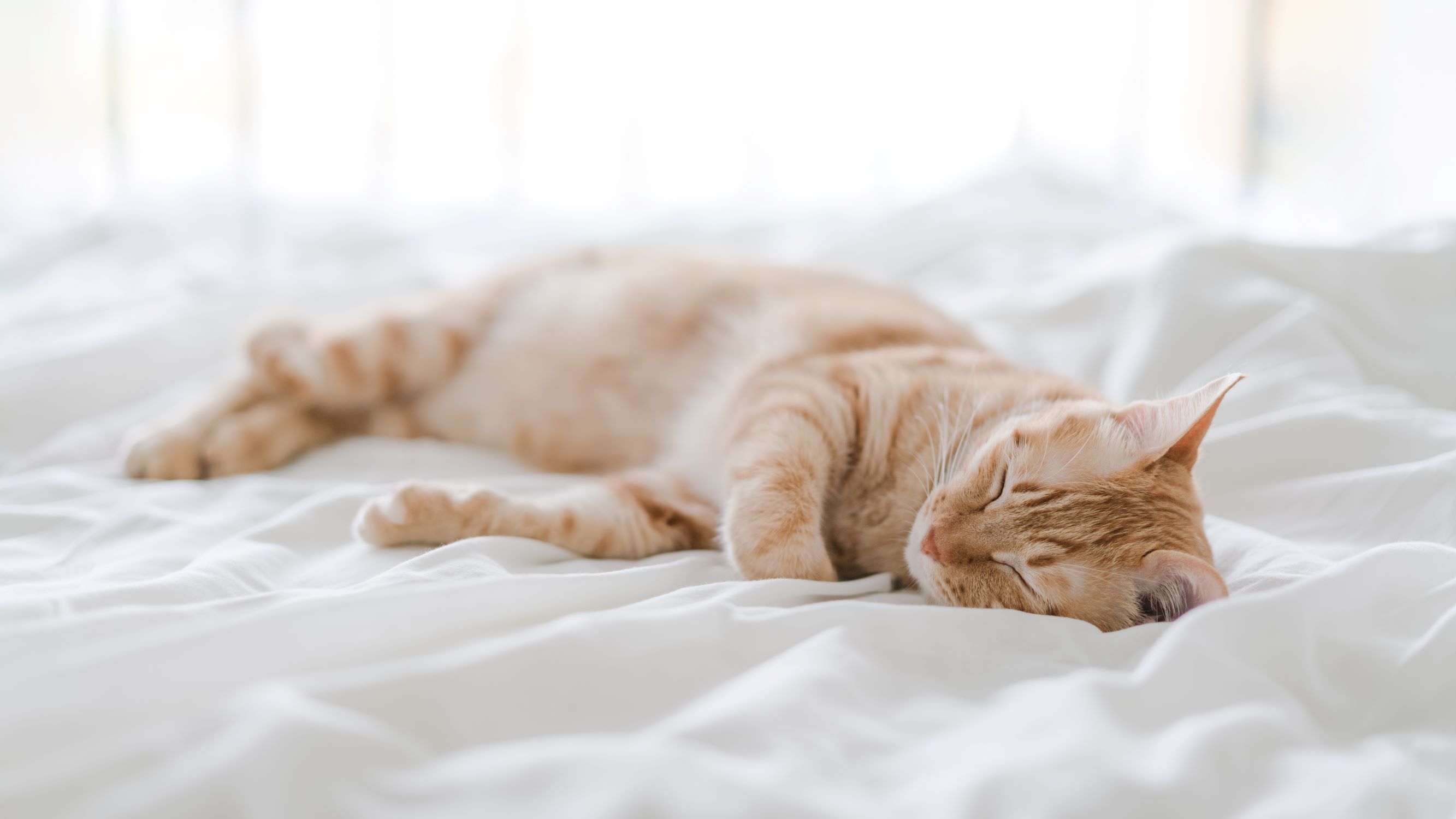Cats and dogs get COVID-19 from their owners at extremely high rates
About two-thirds of pet cats and more than 40% of pet dogs in the study caught COVID-19 after their owners had the disease.

Pet cats and dogs often catch COVID-19 from their owners, a new study suggests.
The study researchers found that, among the pets of people who had recovered from COVID-19, about two-thirds of cats and more than 40% of dogs had antibodies against the coronavirus that causes COVID-19, meaning the pets had been infected with the virus in the past. In particular, cats that slept in their owners' beds had a high risk of catching the disease.
Although researchers have previously documented a few cases of pets catching COVID-19 from their owners, they didn't know exactly how common this human-to-pet transmission was.
"If someone has COVID-19, there is a surprisingly high chance they will pass it on to their pet," study co-author Dr. Dorothee Bienzle, a professor of veterinary pathology at the University of Guelph in Ontario, Canada, said in a statement. The authors recommend that people with COVID-19 keep their distance from their pets, and "keep [pets] out of your bedroom," Bienzle said.
Related: 6 secrets to unlocking your cat's personality
The study will be presented this week at this year's virtual European Congress of Clinical Microbiology & Infectious Diseases (ECCMID 2021) and has not yet been published in a peer-reviewed journal.
For the study, the researchers tested 48 cats and 54 dogs, from 77 households, for antibodies against the novel coronavirus. (Owners in all of the 77 households had previously tested positive for COVID-19.) Owners were also asked about their interactions with their pets, including whether they kissed their pets or allowed the pets to sleep on their bed.
Sign up for the Live Science daily newsletter now
Get the world’s most fascinating discoveries delivered straight to your inbox.
The researchers also tested 75 dogs and cats housed in animal shelters, and 75 stray cats that were seen at a low-cost veterinary clinic, for antibodies against the novel coronavirus.
They found that 67% of the pet cats (32 out of 48 cats) tested positive for COVID-19 antibodies, as did 43% of the pet dogs (23 out of 54 dogs). In contrast, only 9% of the cats and dogs in the animal shelters, and 3% of stray cats, tested positive for COVID-19 antibodies.
This finding suggests that COVID-19 is most likely spreading from people to pets, rather than the other way around, given that strays and shelter animals likely have less contact with humans than pets do.
Fortunately, most pets that had coronavirus antibodies were asymptomatic or had mild symptoms. About 20% of the 54 pet dogs showed symptoms around the time their owners got sick, including reduced energy levels, loss of appetite and cough; but these symptoms cleared up quickly, the researchers said. About 27% of the 48 pet cats had symptoms, including runny nose and difficulty breathing. Three of the feline cases, or 6%, were severe.
Dogs that had close contact with their owners or slept on their owner's beds were no more likely to catch COVID-19 than dogs that didn't have this type of contact. However, cats that spent more time with their owners or slept on their owner's bed were more likely to catch COVID-19, as compared with the perhaps more aloof cats.
Cats appear to be more susceptible to COVID-19 than dogs. This may be because the virus binds more easily to the receptors on the surface of cats' cells compared with dogs' cells, the authors said. In addition, cats may be more likely to sleep near their owners' faces compared with dogs, they said.
No data suggests that pets can pass COVID-19 back to people, and the risk of this happening is low, according to the Centers for Disease Control and Prevention (CDC).
But since the possibility of pet-to-human transmission can't be ruled out, it's all the more reason to isolate pets from people sick with COVID-19, the authors said. Pets that test positive for COVID-19 should also be kept away from other people and pets, according to the CDC.
Originally published on Live Science.

Rachael is a Live Science contributor, and was a former channel editor and senior writer for Live Science between 2010 and 2022. She has a master's degree in journalism from New York University's Science, Health and Environmental Reporting Program. She also holds a B.S. in molecular biology and an M.S. in biology from the University of California, San Diego. Her work has appeared in Scienceline, The Washington Post and Scientific American.










